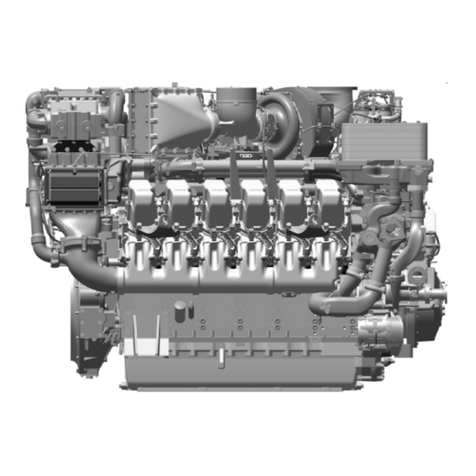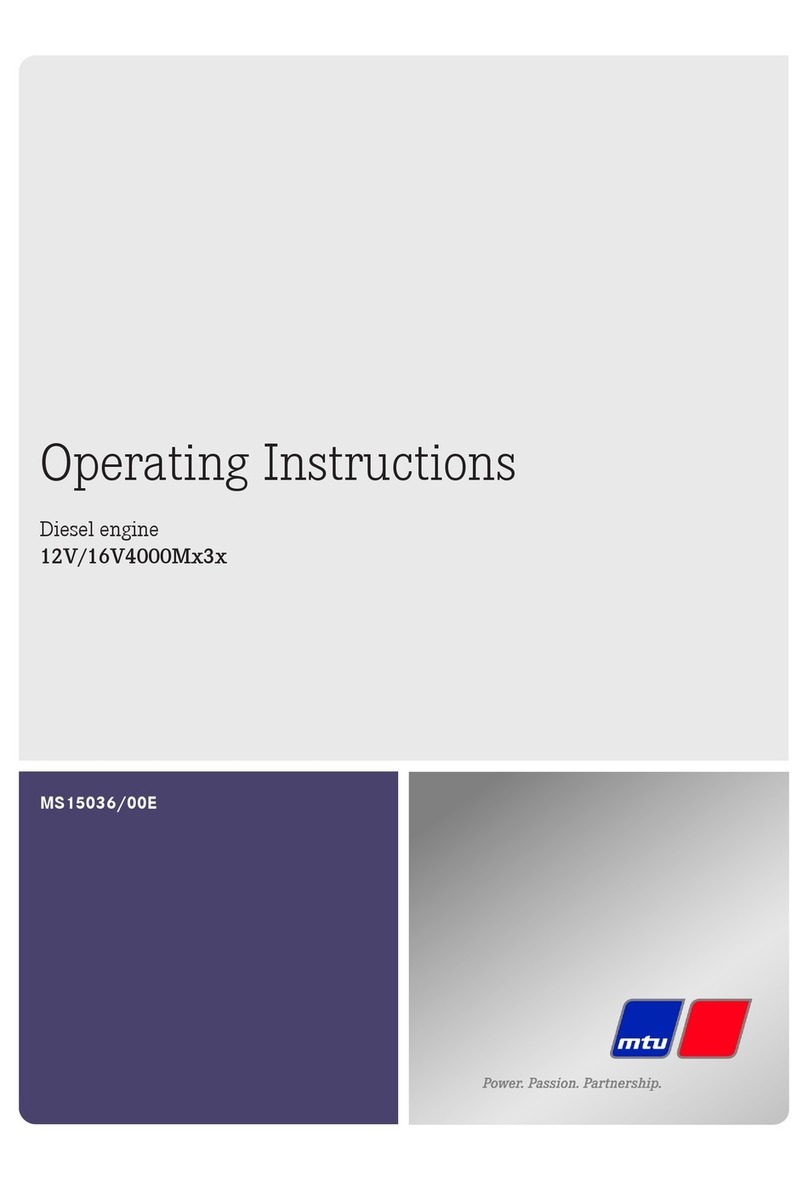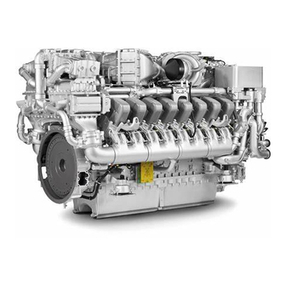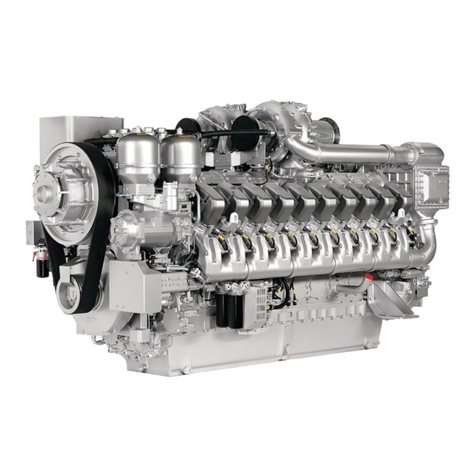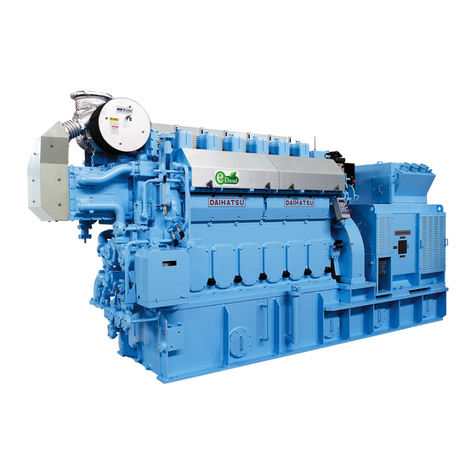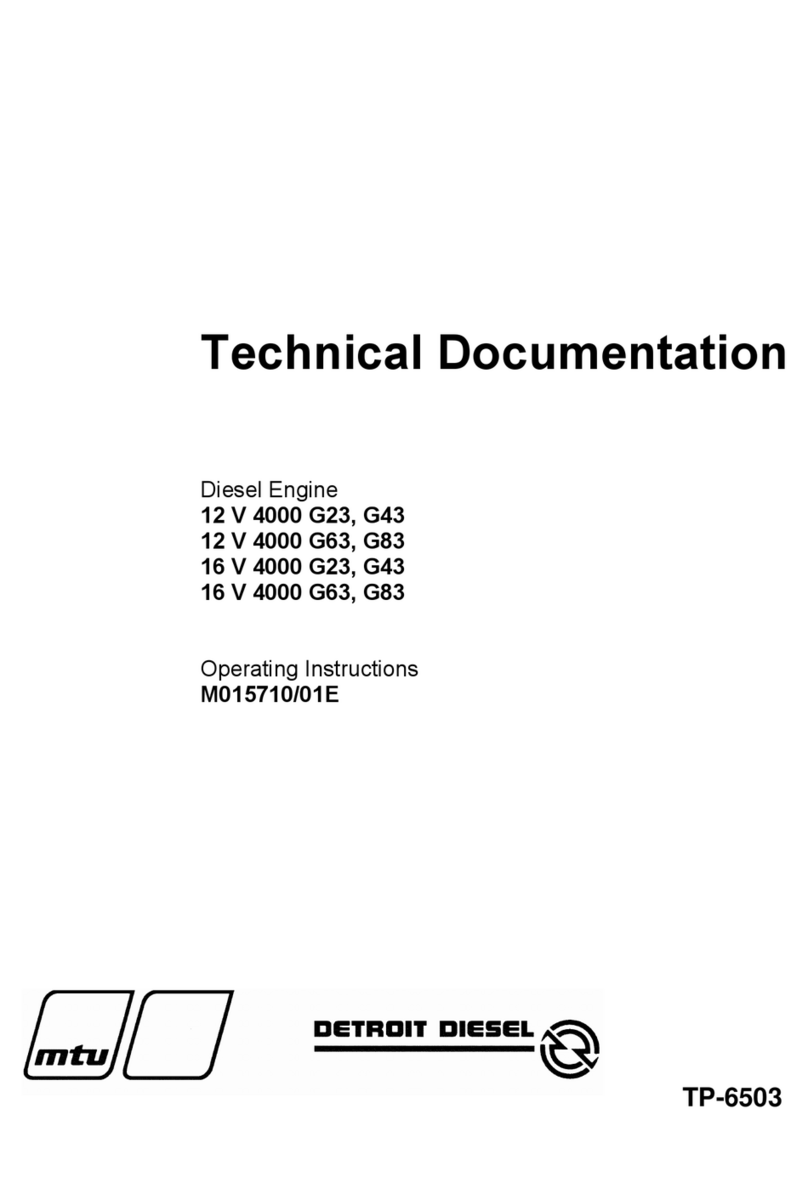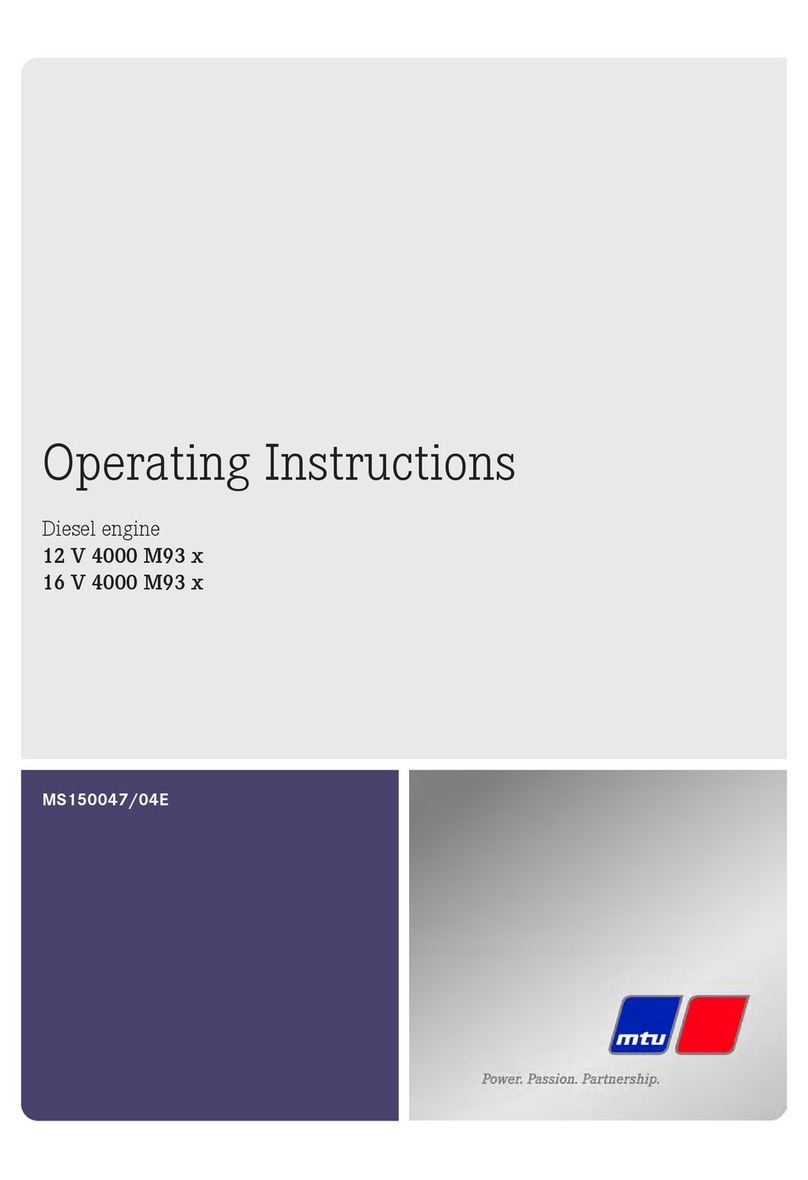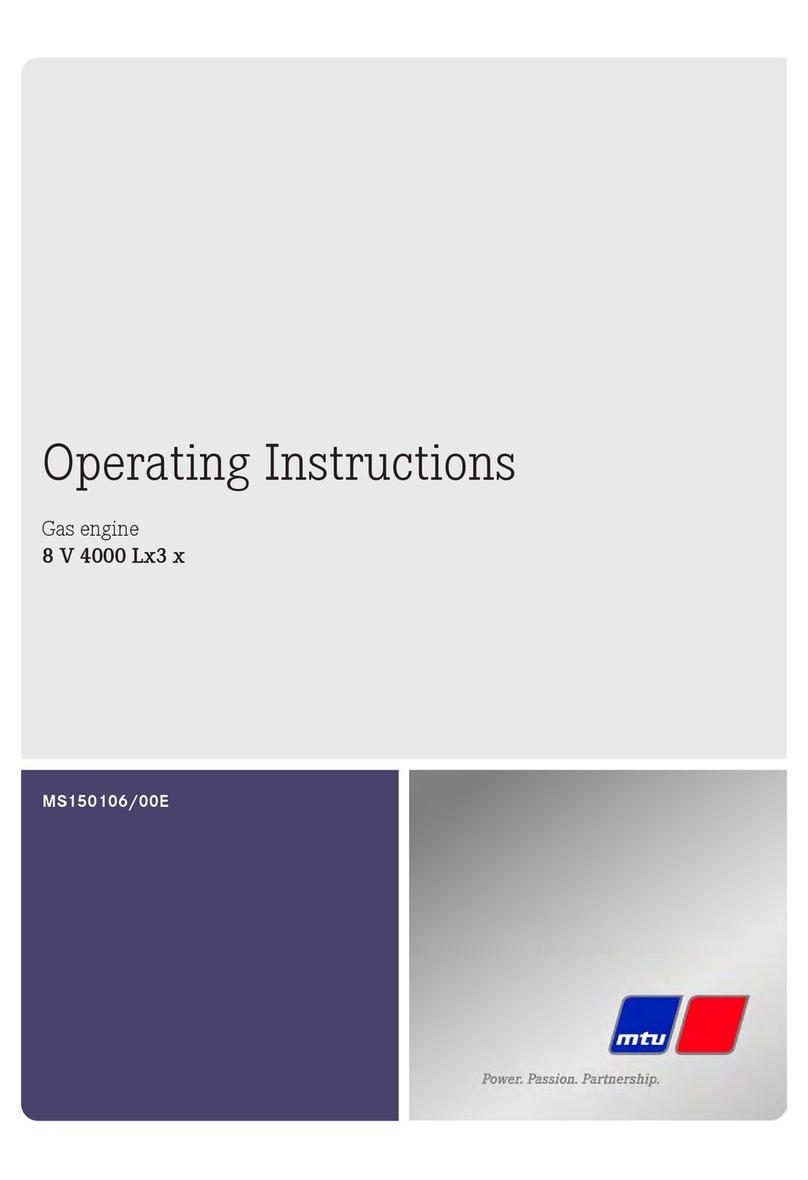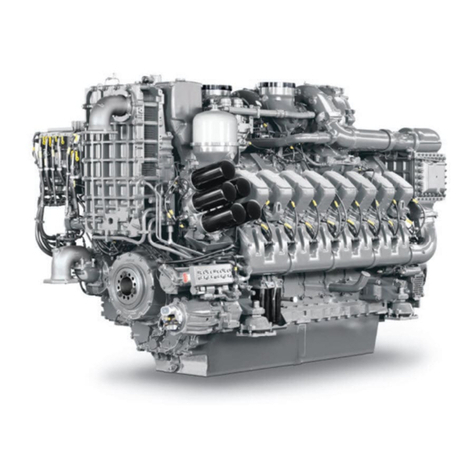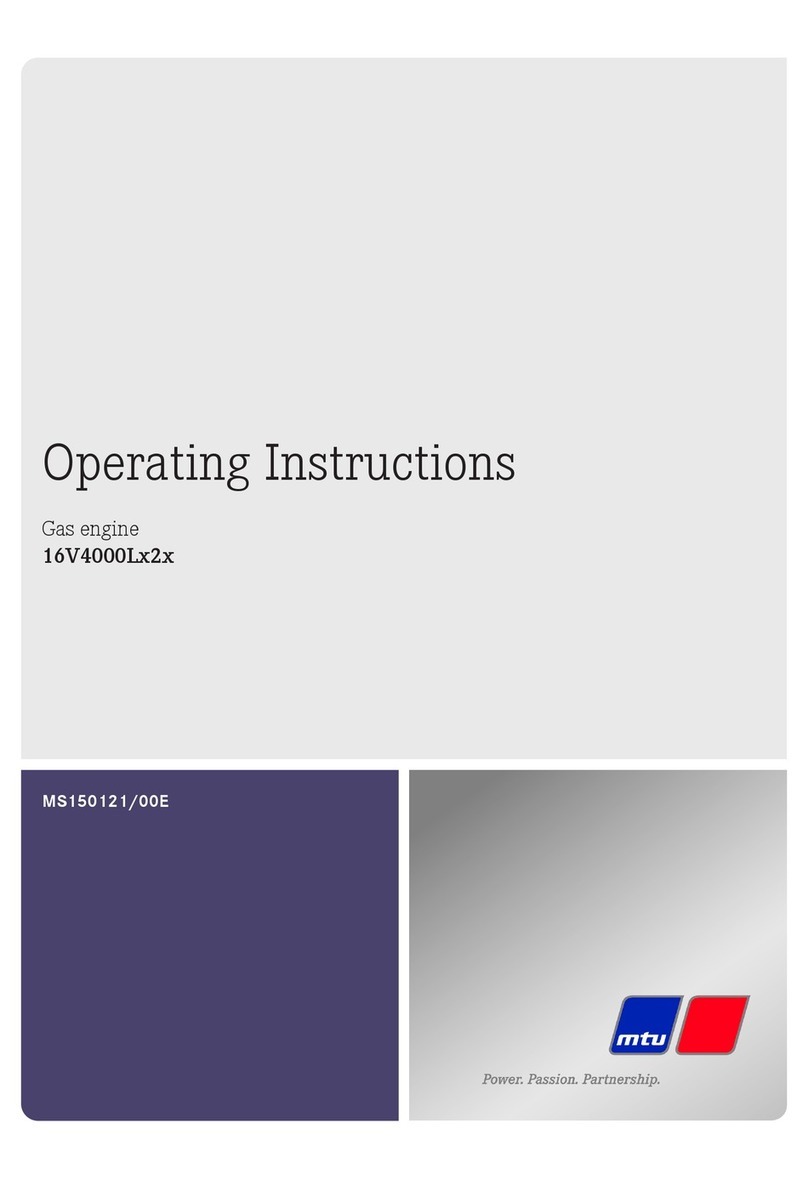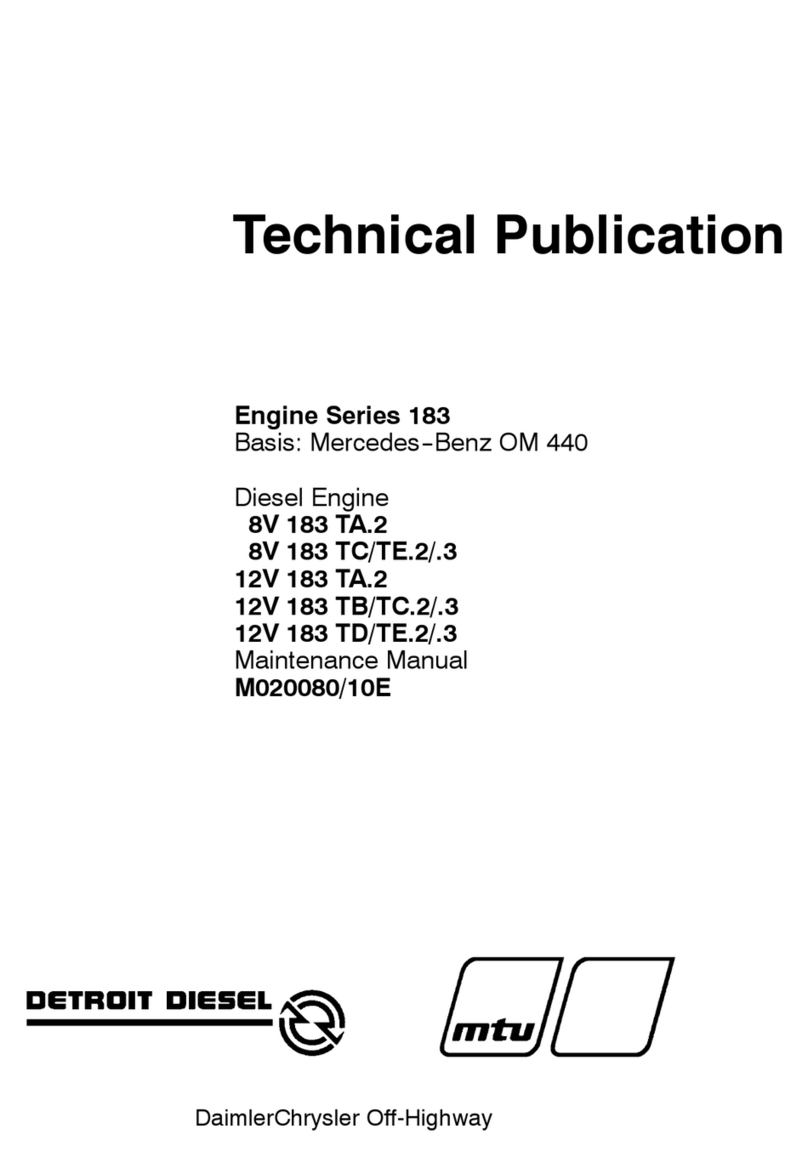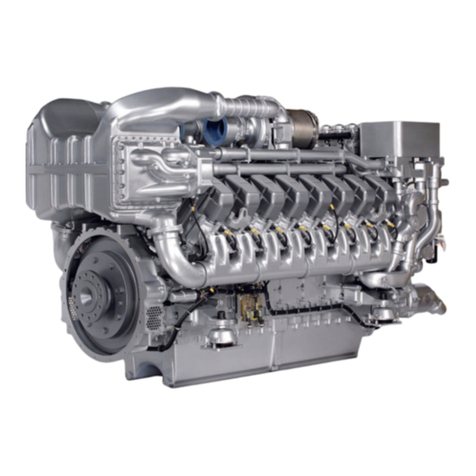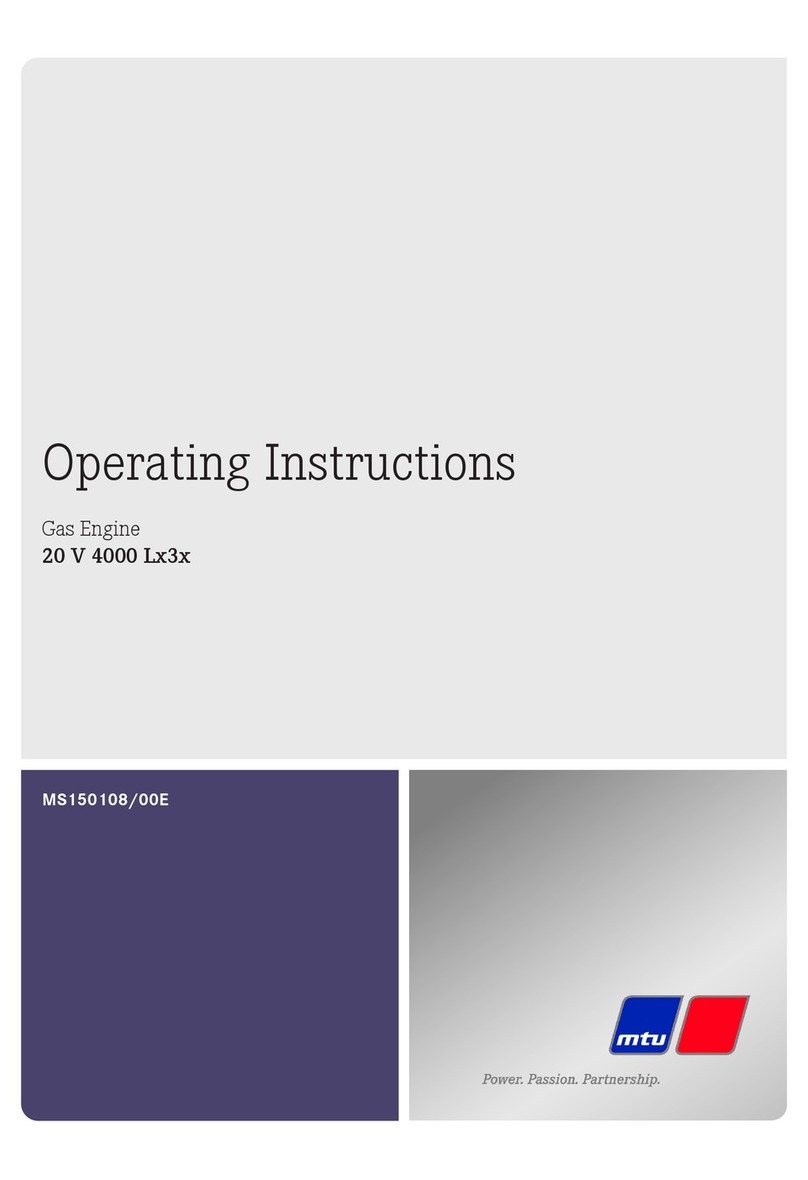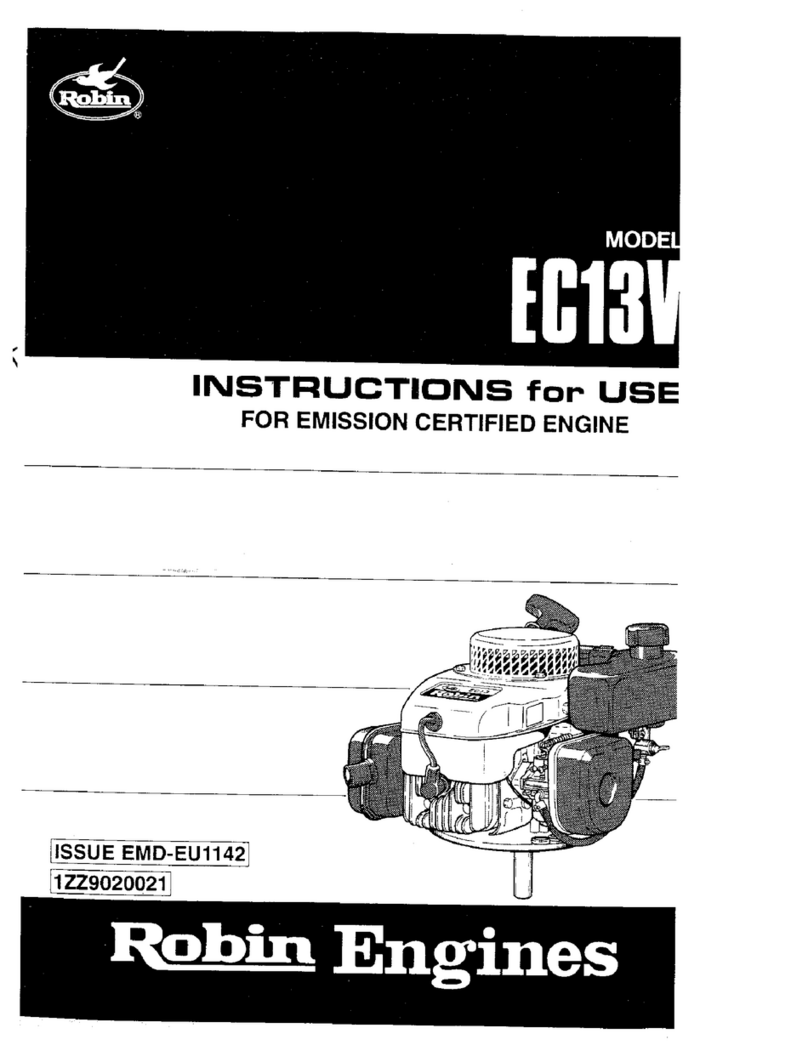
7.4.2 Cylinder head cover – Removal and
installation 89
7.5 Injection Pump / HP Pump 90
7.5.1 Injection pump – Replacement 90
7.5.2 Injection pump – Removal and installation 91
7.6 Injection Valve / Injector 94
7.6.1 Injector – Replacement 94
7.6.2 Injector – Removal and installation 95
7.7 Fuel System 99
7.7.1 HP fuel line – Pressure pipe neck
replacement 99
7.7.2 Fuel – Draining 101
7.7.3 Fuel system – Venting 102
7.8 Fuel Filter 104
7.8.1 Fuel filter – Replacement 104
7.8.2 Fuel prefilter – Differential pressure check and
adjustment of gauge 106
7.8.3 Fuel prefilter – Draining 107
7.8.4 Fuel prefilter ‒ Flushing 108
7.8.5 Fuel prefilter – Filter element replacement 110
7.9 Charge-Air Cooling 112
7.9.1 Intercooler – Checking condensate drain line
for coolant discharge and obstruction 112
7.10 Air Filter 113
7.10.1 Air filter – Replacement 113
7.10.2 Air filter – Removal and installation 114
7.11 Air Intake 115
7.11.1 Contamination indicator – Signal ring position
check 115
7.11.2 Air-flow control flap – Ease of movement
check 116
7.12 Exhaust Flap with Actuator 117
7.12.1 Exhaust flow control flap – Ease of movement
check 117
7.13 Starting Equipment 118
7.13.1 Starter – Condition check 118
7.14 Lube Oil System, Lube Oil Circuit 119
7.14.1 Engine oil – Level check 119
7.14.2 Engine oil – Change 120
7.15 Oil Filtration / Cooling 121
7.15.1 Oil dipstick – Marking 121
7.15.2 Engine oil filter – Replacement 122
7.15.3 Centrifugal oil filter – Cleaning and filter-
sleeve replacement 124
7.16 Coolant Circuit, General, High-
Temperature Circuit 127
7.16.1 Drain and venting points 127
7.16.2 Engine coolant – Level check 132
7.16.3 Engine coolant – Change 133
7.16.4 Engine coolant – Draining 134
7.16.5 Engine coolant – Filling 135
7.16.6 HT coolant pump – Relief bore check 136
7.16.7 Engine coolant – Sample extraction and
analysis 137
7.17 Raw Water Pump with Connections 138
7.17.1 Raw water pump – Relief bore check 138
7.18 Belt Drive 139
7.18.1 Drive belt – Condition check 139
7.19 Battery-Charging Generator 140
7.19.1 Battery-charging generator drive – Drive belt
check and adjustment 140
7.19.2 Battery-charging generator drive – Drive belt
replacement 142
7.20 Engine Mounting / Support 143
7.20.1 Engine mounting – Checking condition of
resilient mounts 143
7.21 Universal Shaft 144
7.21.1 Universal shaft – Greasing 144
7.22 Wiring (General) for Engine/Gearbox/Unit 145
7.22.1 Engine wiring – Check 145
7.23 Accessories for (Electronic) Engine
Governor / Control System 146
7.23.1 Engine governor and connectors – Cleaning 146
7.23.2 Engine monitoring unit and connectors –
Cleaning 147
7.23.3 Start interlock limit switch – Check 148
7.23.4 Engine control unit plug connections – Check 149
7.23.5 Engine monitoring unit – Plug connection
check 150
7.23.6 Engine control unit – Removal and installation 151
7.24 Emergency Instrumentation (Local
Operating Panel) 153
7.24.1 LOP and connectors – Cleaning 153
7.24.2 LOP – Visual inspection 154
7.24.3 LOP – Test procedures 156
8 Appendix A
8.1 Abbreviations 158
8.2 MTU contacts/service partners 161
9 Appendix B
9.1 Special Tools 162
9.2 Index 166
4 | Table of Contents | MW15407/14E 2012-02
DCL-ID: 0000015775 - 001
